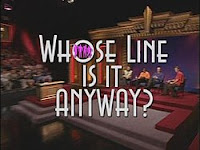As part of the pitch and presentation we have to prepare, we have to decide which channel the show we create would fit on, so I thought i would research what the main channels (BBC One, ITV and Channel 5) look for when commissioning new programmes.
When looking at the BBC, we found that they were mainly looking for peak Saturday night shows, particularly ones that would be able to reach a huge audience. What the BBC looks for;
1) Humour - audience needs to laugh, and the broadcaster wants to laugh along with the people on-screen.
2) Scale - they want shows that will keep the audience coming back year after year, series after series, their biggest example of this on their current schedule is Strictly Come Dancing.
3) Talent - central to their shows they want a show that demonstrates talent.
ITV - Every year ITV invests around 1 billion pounds in commissioning new television programmes. ITV is the home of high quality, popular television from the biggest entertainment events, to original drama, soaps, sport, factual series and independent news.
Mainly ITV looks for shows with good, relatable characters as well as good stories. It has to be ambitious, and in a way simple, ITV likes to reach a big audience so they do not like ideas that are 'too cynical' that could put some audience off. They welcome ideas with 'popular and familiar hosts'.
 What we chose - For 'Challenging Times' we have decided to move forward with BBC One as our target channel. We think that what our show brings is exactly what the BBC are looking for, it targets a huge array of ages whilst creating some fun interactivity for all to partake in. Looking at the BBC Schedule we think it fits in perfectly early Saturday evenings, where as you can see, they normally show game shows at this time.
What we chose - For 'Challenging Times' we have decided to move forward with BBC One as our target channel. We think that what our show brings is exactly what the BBC are looking for, it targets a huge array of ages whilst creating some fun interactivity for all to partake in. Looking at the BBC Schedule we think it fits in perfectly early Saturday evenings, where as you can see, they normally show game shows at this time.











